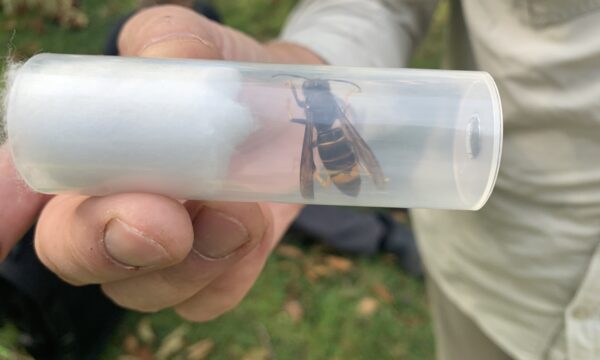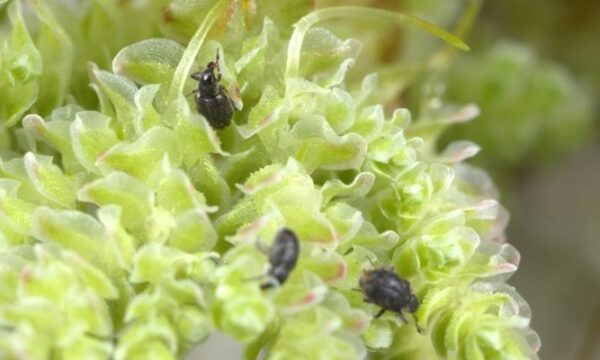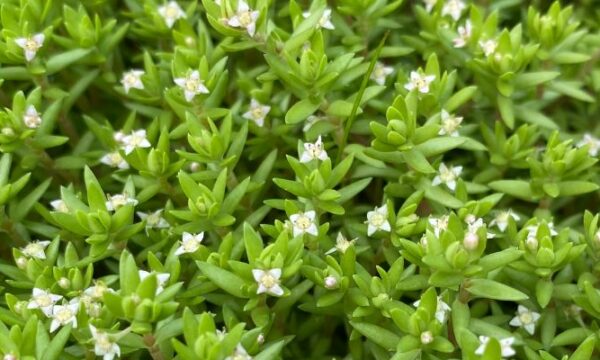By Stephanie Dittrich. Reblogged from Island Conservation.
Invasive crazy ants threaten Christmas Island Red Crab populations, but a certain species of wasp might be able to help.

The Christmas Island red crab is a land crab endemic to Christmas Island and Cocos Islands in the Indian Ocean. Credit: John Tann, Wikimedia
Christmas Island, a remote Australian territory in the Indian Ocean, is known for an abundance of Red Crabs, a species once recorded in numbers nearing 44 million. The Red Crab has captured the hearts of naturalists and nature novices alike, due to the beauty and magnificence of their yearly mass migration from land to sea to lay their eggs in the ocean. However, in recent years, they have suffered a tremendous decline of roughly 40 million, according to recent population surveys. The cause? Invasive crazy ants, which are believed to have been introduced by a ship sometime during the early 20th century.
“It’s really heartbreaking,” says Dr. Tanya Detto, from Parks Australia, which manages the Christmas Island National Park. Around 30 years ago, invasive crazy ants proliferated into super-colonies that sparked a decline in red crab numbers.

A Christmas Island Red Crab. Credit: Peter McKiernan, flickr
Red Crabs fascinating nature isn’t the only reason to care about preserving them. They are also considered a keystone species on Christmas Island, meaning other species and components of the ecosystem depend directly or indirectly on the wellbeing of the Red Crab. If Red Crabs were driven to extinction, the landscape of Christmas Island could change drastically.

The spectacular yearly Christmas Island Red Crab migration. Credit: Stefan Krasowski, flickr
However, there is hope. A project headed by researchers like Dr. Tanya Detto and Dr. Peter Green from La Trobe University to save the crabs is currently underway and appears to be showing signs of success. The project began with the introduction of 300 tiny wasps from Malaysia. These wasps were chosen due to their love of consuming scale insects which are the primary food source of invasive crazy ants on Christmas Island and are fueling the unprecedented population growth.
Researchers have spent the past few years going through rigorous preparation and setting controls to ensure the wasp itself does not become invasive. Many people think back to the use of Cane Toads as a biocontrol agent in Australia that quickly became invasive. Dr. Detto expalins:
“It’s an understandable concern [but] there are a lot more checks and balances in place now than there used to be.”
So far, this approach has shown promise. The Red Crab population is rebounding. Crabs have been able to dig mating burrows in areas previously occupied by invasive crazy ants.
“Without intervention,” Dr. Detto said, “crab numbers on the island would have continued their decline with the eventual possibility of extinction.”
To determine with certainty that this approach has been a success, they will need to repeat the wasp introduction at a few more sites. Dr. Detto, explains, “it will be a really awesome day to know if it worked, because it’s not something we can give up on. We need to find a solution, whatever it might be.”
The good news is, today the crabs are considered a protected species and harming them in any way is illegal. A story such as this one, is a message of hope that native species and ecosystems can be saved with new and creative approaches to conservation. To learn more about conservation efforts on Christmas Island, and the recovery of the Christmas Island’s native Lizards.
1 Comment
Leave a Reply
Related News & Blogs
Training on mass production of entomopathogenic nematodes for biological control of invasive insect pests
A team of global experts in the production of biocontrol agent provided a practical training on the mass culture of entomopathogenic nematodes at the Biocontrol Agent Facility of Rwanda Agriculture and Animal Resource Development Board (RAB), writes Dr…
20 December 2023





[…] via How a wasp might save the Christmas Island red crab — The Invasives Blog […]